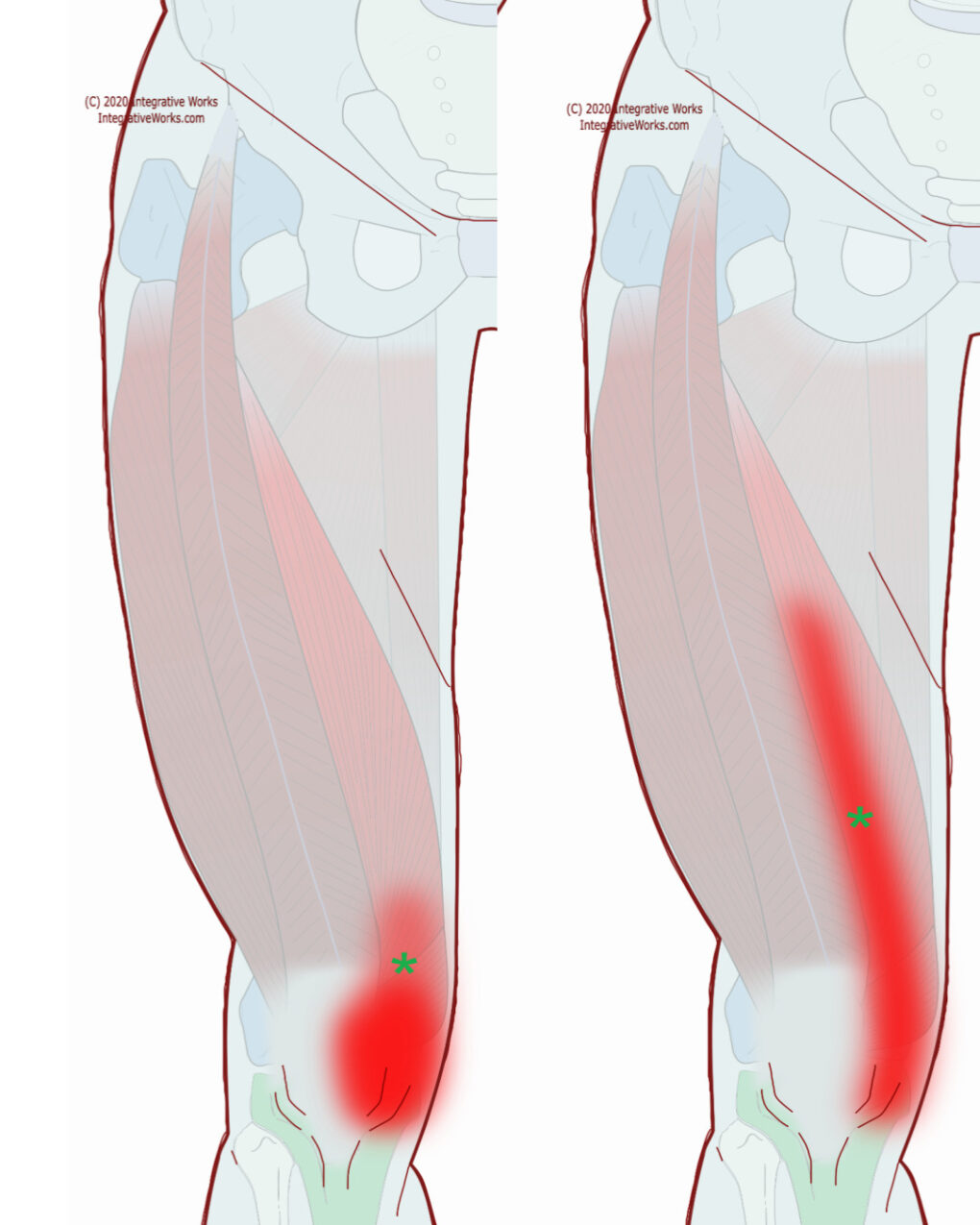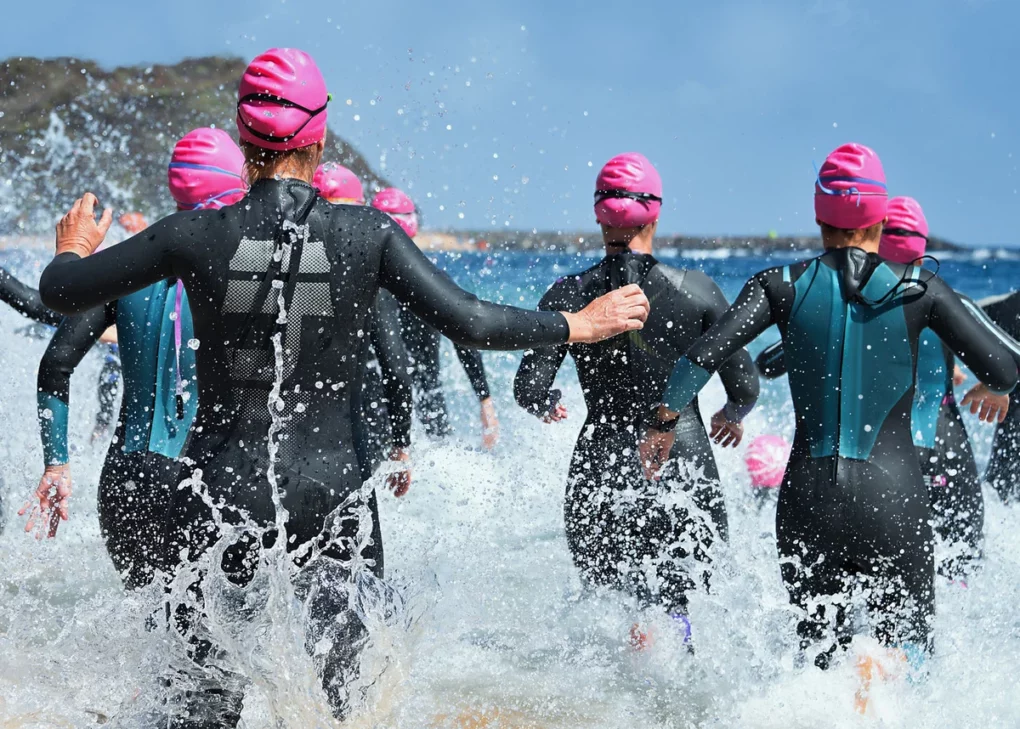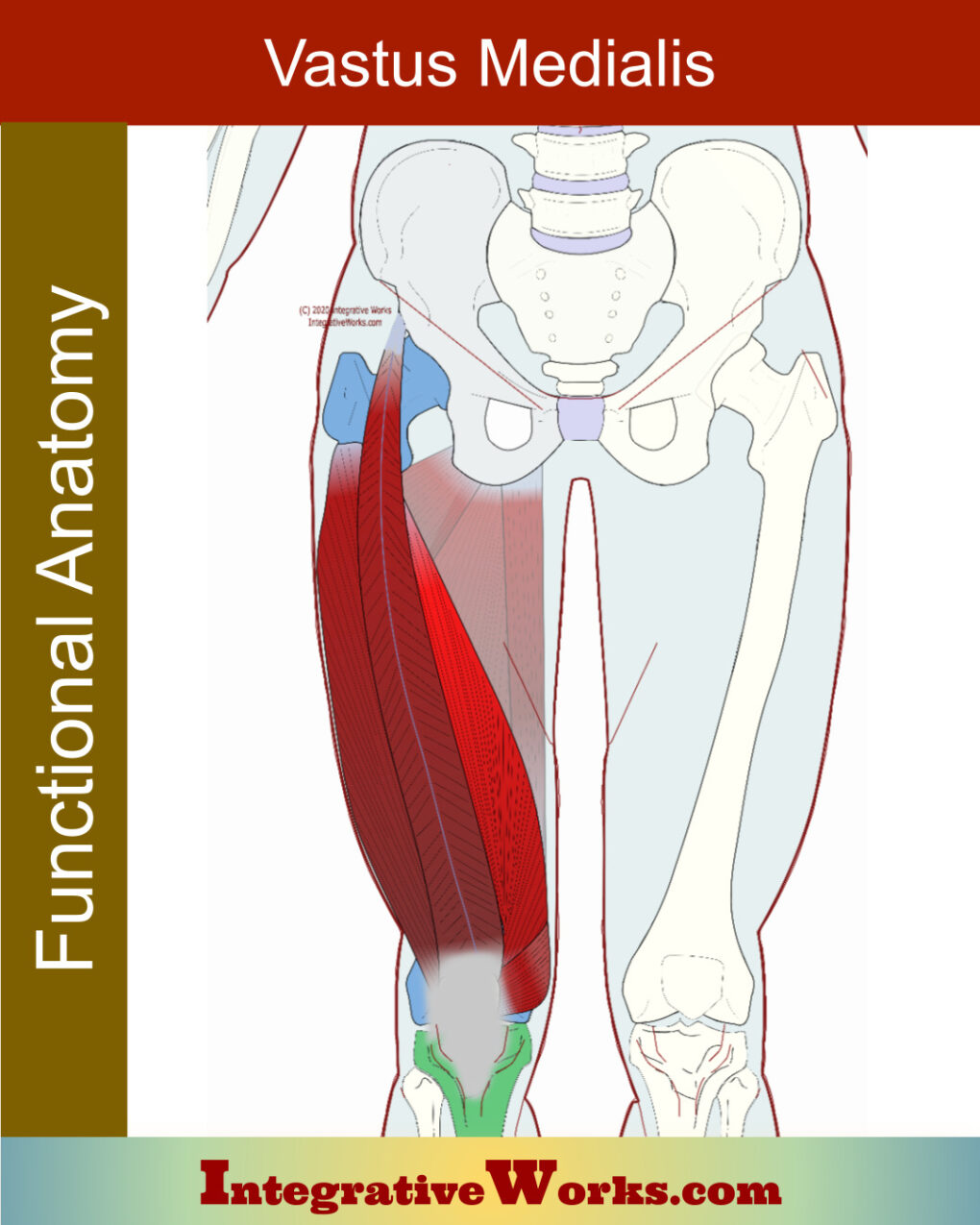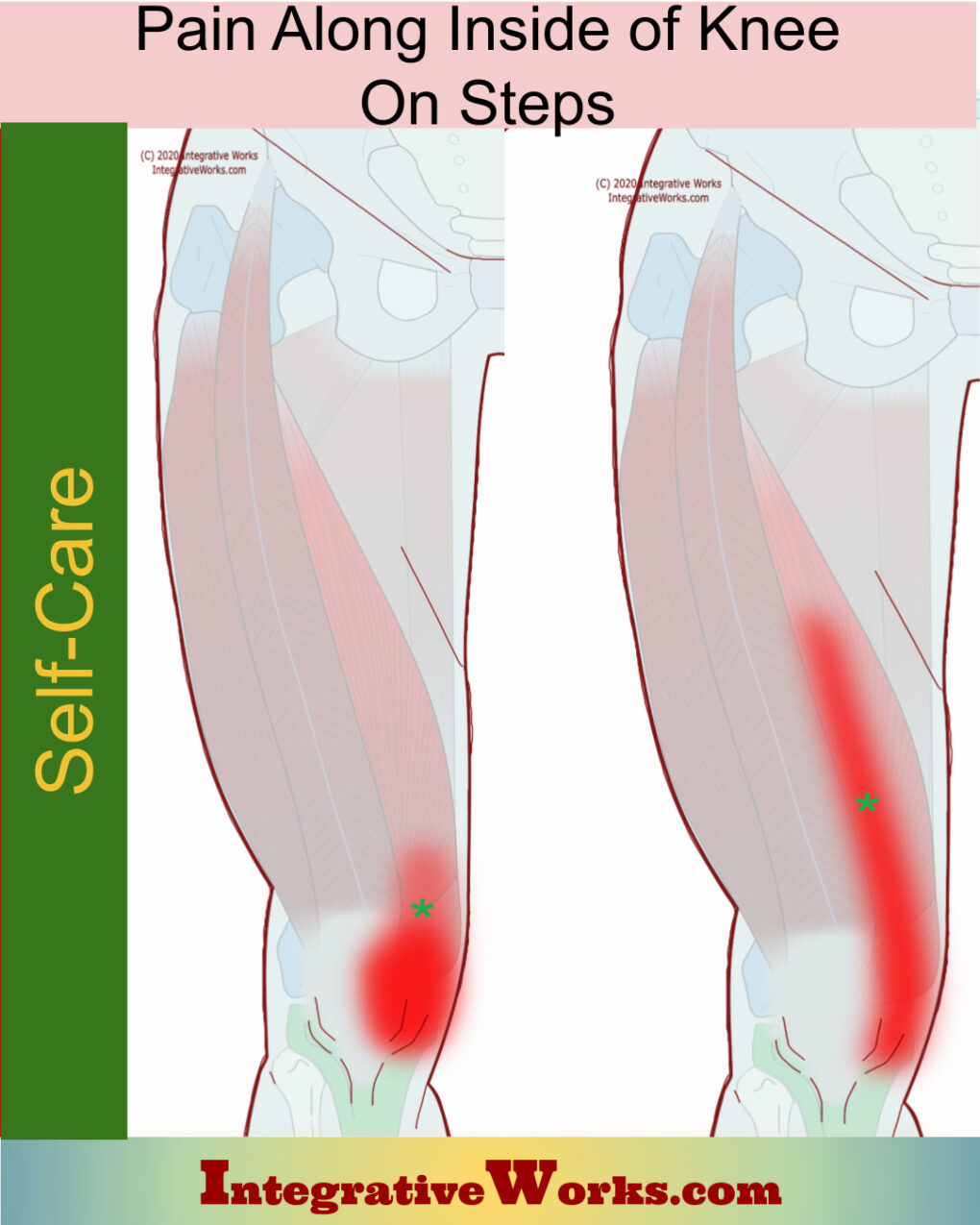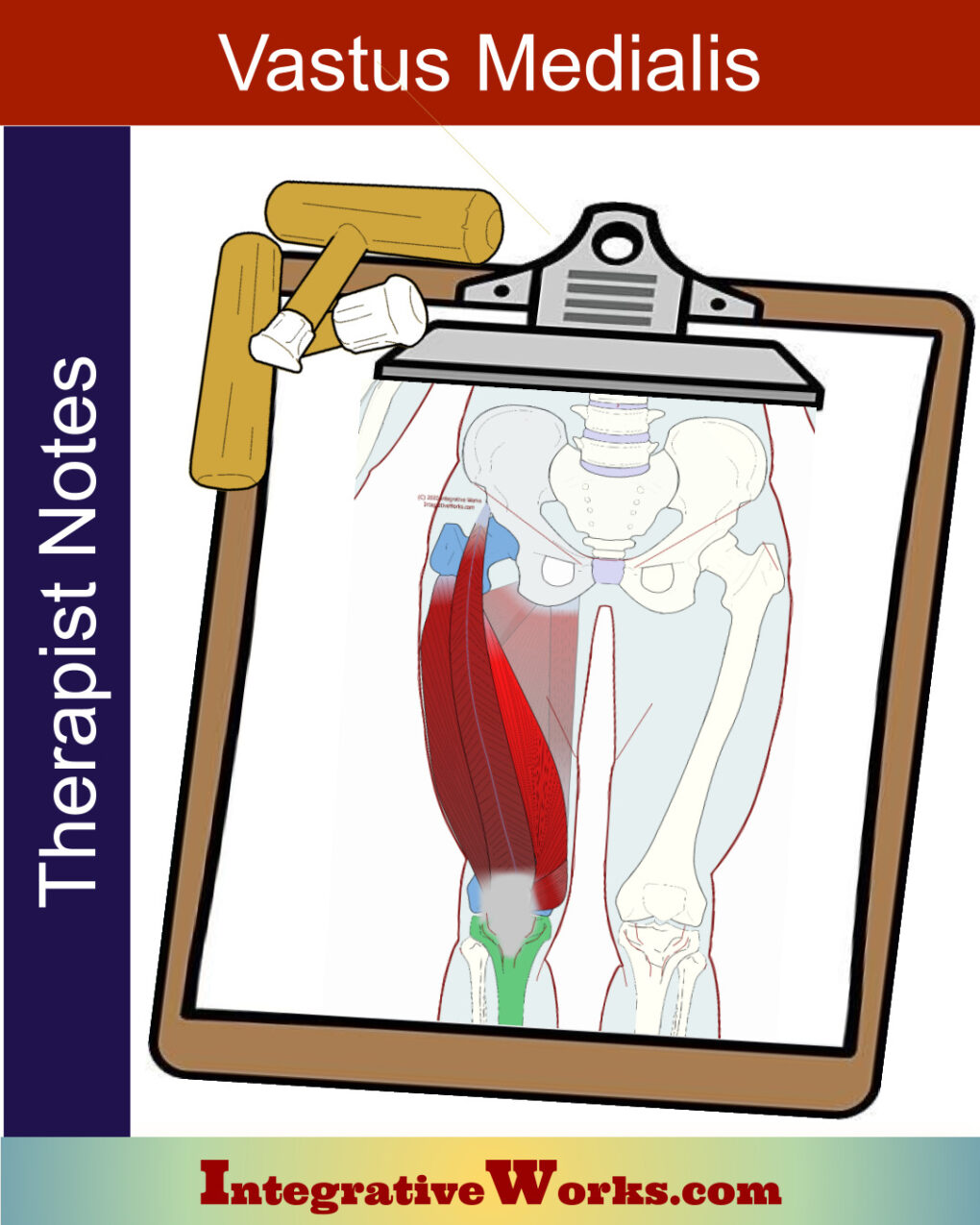Table of Contents
- How People Describe This Pain Pattern
- How You Activate and Intensify This Pain Pattern
- Self-Care – Getting Relief on Your Own
- Musculoskeletal Anatomy Behind Your Pain
- Therapy Notes for Massage and Bodywork
Want to skip ahead?
Here’s a link to my post about
getting relief on your own.
How People Describe This Pain Pattern
How You Activate and Intensify This Pain Pattern
Roughing Your Kicker
Most often, the trigger point is activated by some jarring movement or trauma to the knee.
The jarring movements can directly impact the knee or imbalance the foot. This trigger point often activates from a foot problem. This knee pain is a common problem for athletes after a rough landing or fall.
Blow to the knee
Additionally, this becomes more active from a blow to the knee. If the foot is already stiff, it can be as simple as bumping into a desk. In most cases, the pain comes from a more severe blow. I had this knee problem after a car accident where my knee hit the dash. In my practice, it is more often a problem where they’ve taken an unexpected step.
Kneeling
Research says that it can also be a result of kneeling. Specifically, the research mentions kneeling on a hard surface, prolonged kneeling, or working on your knees.
The Musculoskeletal Anatomy Behind Your Pain
Getting Relief on Your Own
Therapy Notes for Massage and Bodywork
Support Integrative Works to
stay independent
and produce great content.
You can subscribe to our community on Patreon. You will get links to free content and access to exclusive content not seen on this site. In addition, we will be posting anatomy illustrations, treatment notes, and sections from our manuals not found on this site. Thank you so much for being so supportive.
Cranio Cradle Cup
This mug has classic, colorful illustrations of the craniosacral system and vault hold #3. It makes a great gift and conversation piece.
Tony Preston has a practice in Atlanta, Georgia, where he sees clients. He has written materials and instructed classes since the mid-90s. This includes anatomy, trigger points, cranial, and neuromuscular.
Question? Comment? Typo?
integrativeworks@gmail.com
Follow us on Instagram

*This site is undergoing significant changes. We are reformatting and expanding the posts to make them easier to read. The result will also be more accessible and include more patterns with better self-care. Meanwhile, there may be formatting, content presentation, and readability inconsistencies. Until we get older posts updated, please excuse our mess.


